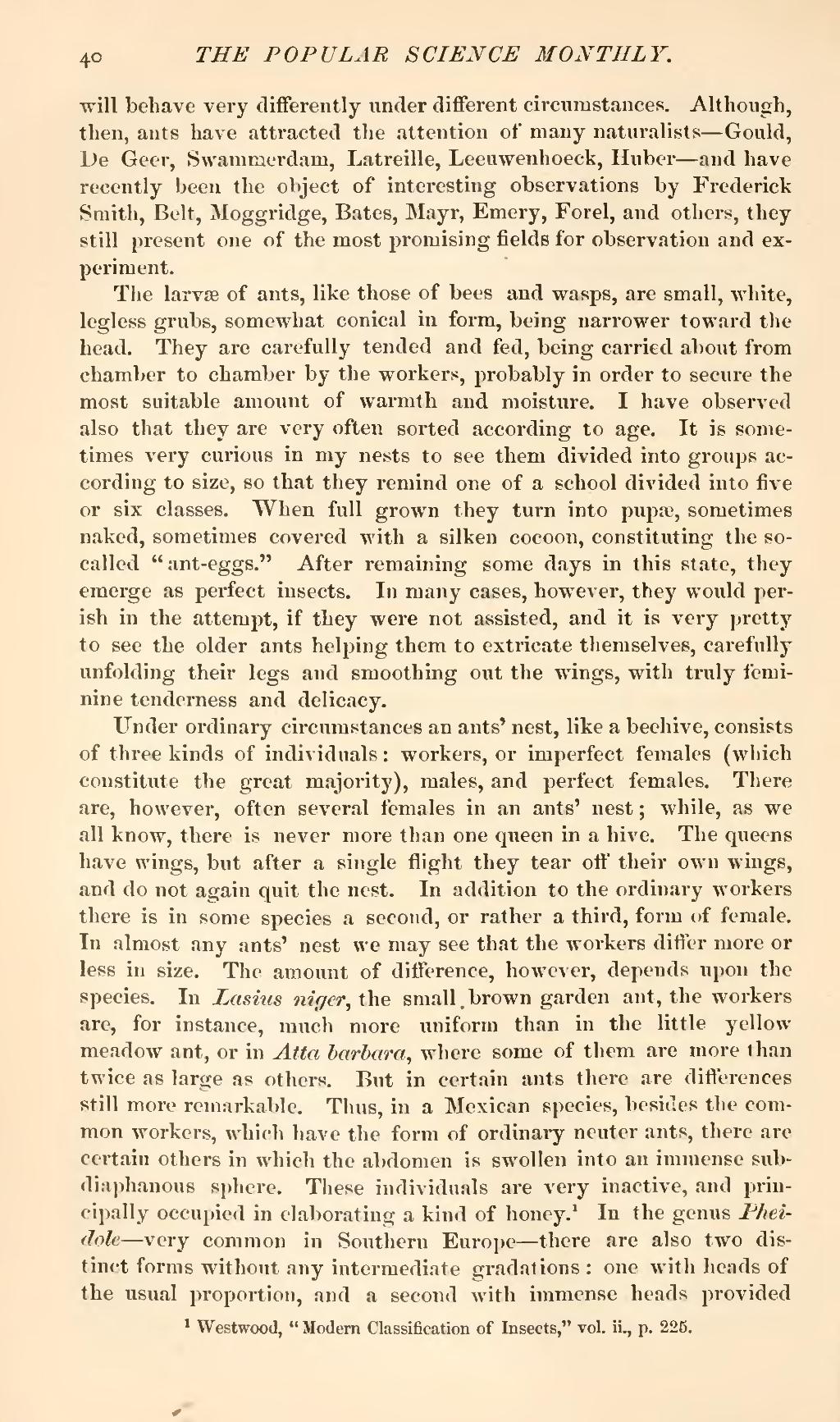will behave very differently under different circumstances. Although, then, ants have attracted the attention of many naturalists—Gould, De Geer, Swammerdam, Latreille, Leeuwenhoeck, Huber—and have recently been the object of interesting observations by Frederick Smith, Belt, Moggridge, Bates, Mayr, Emery, Forel, and others, they still present one of the most promising fields for observation and experiment.
The larvæ of ants, like those of bees and wasps, are small, white, legless grubs, somewhat conical in form, being narrower toward the head. They are carefully tended and fed, being carried about from chamber to chamber by the workers, probably in order to secure the most suitable amount of warmth and moisture. I have observed also that they are very often sorted according to age. It is sometimes very curious in my nests to see them divided into groups according to size, so that they remind one of a school divided into five or six classes. When full grown they turn into pupæ, sometimes naked, sometimes covered with a silken cocoon, constituting the so-called "ant-eggs." After remaining some days in this state, they emerge as perfect insects. In many cases, however, they would perish in the attempt, if they were not assisted, and it is very pretty to see the older ants helping them to extricate themselves, carefully unfolding their legs and smoothing out the wings, with truly feminine tenderness and delicacy.
Under ordinary circumstances an ants' nest, like a beehive, consists of three kinds of individuals: workers, or imperfect females (which constitute the great majority), males, and perfect females. There are, however, often several females in an ants' nest; while, as we all know, there is never more than one queen in a hive. The queens have wings, but after a single flight they tear off their own wings, and do not again quit the nest. In addition to the ordinary workers there is in some species a second, or rather a third, form of female. In almost any ants' nest we may see that the workers differ more or less in size. The amount of difference, however, depends upon the species. In Lasius niger, the small brown garden ant, the workers are, for instance, much more uniform than in the little yellow meadow ant, or in Atta barbara, where some of them are more than twice as large as others. But in certain ants there are differences still more remarkable. Thus, in a Mexican species, besides the common workers, which have the form of ordinary neuter ants, there are certain others in which the abdomen is swollen into an immense sub-diaphanous sphere. These individuals are very inactive, and principally occupied in elaborating a kind of honey.[1] In the genus Pheidole—very common in Southern Europe—there are also two distinct forms without any intermediate gradations: one with heads of the usual proportion, and a second with immense heads provided
- ↑ Westwood, "Modern Classification of Insects," vol. ii., p. 225.
